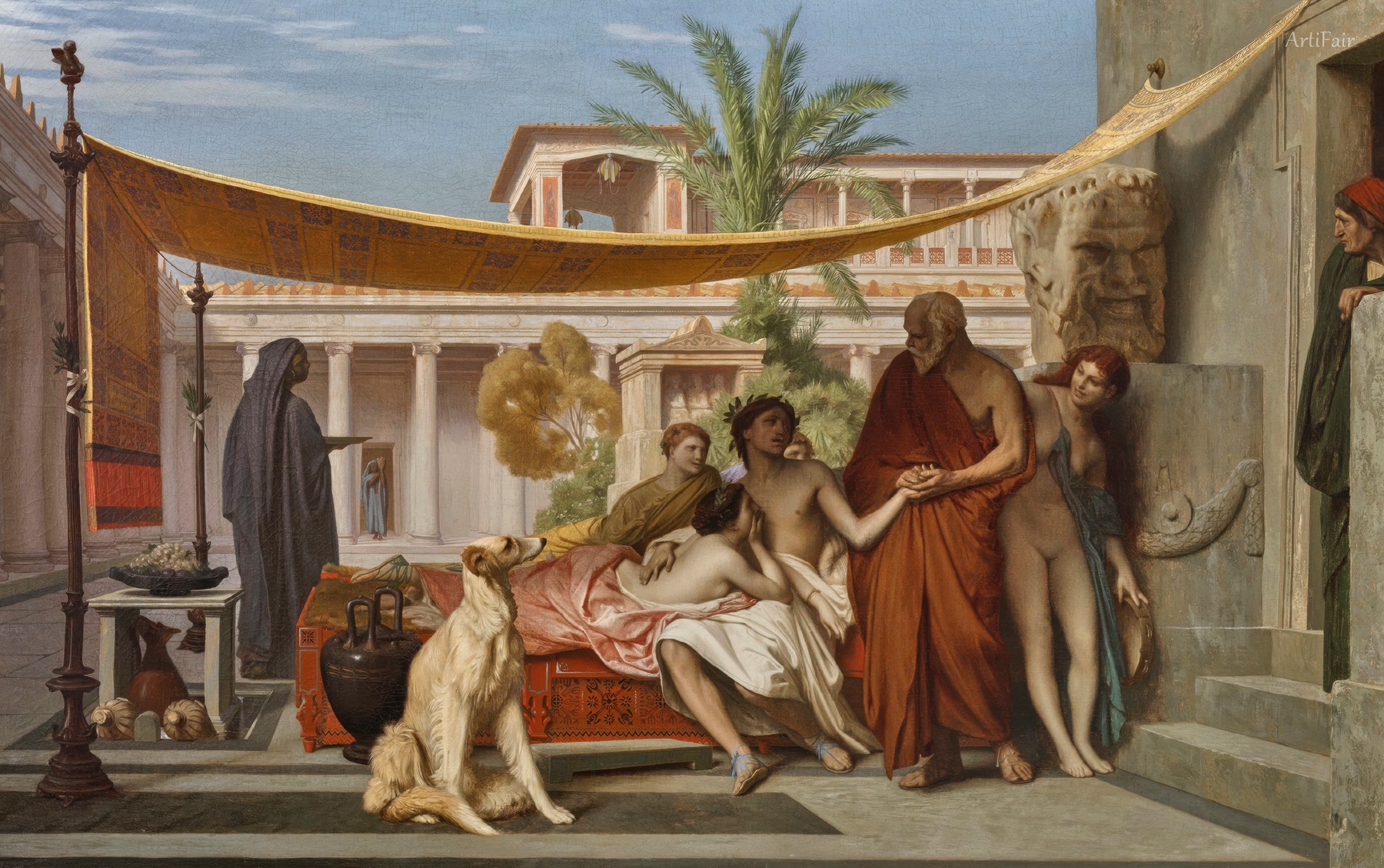

Jean-Léon Gérôme
FR
227
Artworks
1824 - 1904
Lifespan
Artist Biography
Jean-Léon Gérôme (11 May 1824 – 10 January 1904) was a distinguished French painter and sculptor, renowned for his contributions to Academic art. Born in Vesoul, Haute-Saône, Gérôme received his initial artistic instruction locally before moving to Paris at sixteen to study under Paul Delaroche in 1840. This apprenticeship was formative, and he accompanied Delaroche to Italy in 1843, immersing himself in the classical art of Florence, Rome, and Pompeii. Upon returning to Paris in 1844, he briefly joined the atelier of Charles Gleyre and attended the École des Beaux-Arts. Despite an unsuccessful attempt at the Prix de Rome in 1846, due to perceived inadequacies in figure drawing, his 1847 Salon debut with "The Cock Fight" earned him a third-class medal. This work, lauded by Théophile Gautier, positioned him as a leading figure in the Neo-Grec movement, effectively launching his illustrious career.
Gérôme's early Salon successes continued with works like "The Virgin, the Infant Jesus and Saint John" and "Anacreon, Bacchus and Eros" (1848). He received significant commissions, including a mural, "The Age of Augustus, the Birth of Christ" (c. 1852–1854), for Napoleon III, which allowed him to travel extensively. His first journey to Egypt in 1856 marked a pivotal turn towards Orientalism. These travels, which also took him to Turkey, the Near East, and North Africa, provided rich material for his paintings. He meticulously collected artifacts and costumes, and made numerous oil sketches on location, which informed his studio work. Paintings such as "Egyptian Recruits Crossing the Desert" and "The Slave Market" (c. 1866) became hallmarks of this period, combining ethnographic detail with academic precision, though sometimes blending observed reality with studio idealizations and raising contemporary discussions about cultural representation.
In 1863, Gérôme married Marie Goupil, daughter of the art dealer Adolphe Goupil, which further solidified his position in the art world. A year later, he was appointed a professor at the École des Beaux-Arts, a role he held for nearly four decades, influencing over 2,000 students, including notable artists like Mary Cassatt and Thomas Eakins. His atelier was known for its rigorous, if sometimes boisterous, training methods. Alongside his teaching, Gérôme continued to produce significant historical and mythological paintings. Works like "Ave Caesar! Morituri te Salutant" (1859) and "Pollice Verso" (1872) – the latter famed for popularizing the "thumbs down" gesture for gladiatorial combat – showcased his dramatic flair and meticulous research. "The Execution of Marshal Ney" (1868) and "L'Eminence Grise" (1873) demonstrated his ability to tackle controversial historical subjects and complex compositions, earning both acclaim and criticism.
In his later career, Gérôme increasingly turned to sculpture, a medium he embraced with characteristic vigor from the 1870s. His first major sculpture, a bronze gladiator based on "Pollice Verso," was exhibited in 1878. He experimented innovatively with materials, creating tinted marble statues like "Tanagra" (1890) and "Dancer with Three Masks" (1902), and combined bronze, ivory, and precious stones in works like "Bellona" (1892). The "Tanagra" series, inspired by recently excavated figurines, became a significant focus, with paintings and sculptures interconnected, exploring themes of artistic creation and antiquity. During this period, Gérôme also became a vocal critic of Impressionism, famously opposing the Caillebotte bequest to the state in 1894, viewing the movement as a decline in artistic standards.
Towards the end of his life, Gérôme produced a series of allegorical paintings centered on the theme of "Truth," notably "Truth Coming Out of Her Well" (1896). This series is often interpreted as a commentary on contemporary art trends, particularly his disdain for Impressionism, and perhaps the broader socio-political climate like the Dreyfus affair. He expressed a sense of disillusionment with the modernizing world, lamenting the loss of traditional French values. Gérôme died on January 10, 1904, in his Paris studio, found near a portrait of Rembrandt and his own "Truth" painting. He was buried in Montmartre Cemetery, leaving behind a vast body of work that reflected his immense energy and dedication.
Gérôme's legacy is complex and has undergone significant re-evaluation. While his academic style and opposition to modernism led to a decline in his posthumous reputation for much of the 20th century, his technical mastery, historical accuracy (within the conventions of his time), and influence as a teacher are undeniable. His paintings, widely reproduced through Goupil's firm, made him one of the most famous artists of his era, particularly popular with American collectors. His Orientalist works, while sometimes criticized for their exoticism and potential for stereotyping, are also recognized for their detailed depictions and are now sought after by collections in the Middle East. Recent scholarship and exhibitions have revived interest in Gérôme, acknowledging his significant role in 19th-century art, his narrative power, and his impact on popular visual culture, including cinema. His works are housed in major museums worldwide, attesting to his enduring, if controversial, artistic importance.